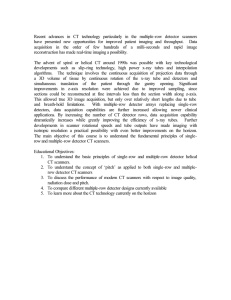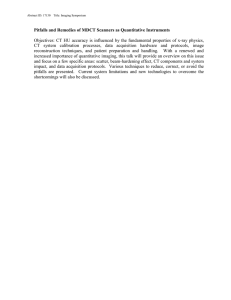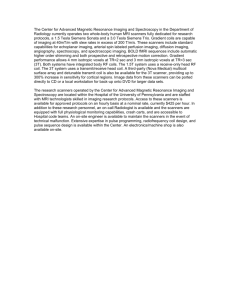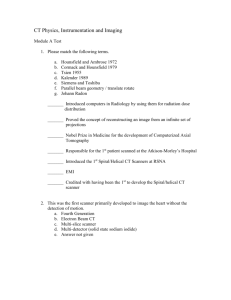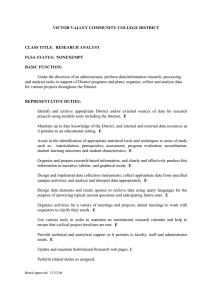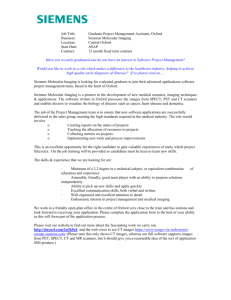AbstractID: 9780 Title: Recent Advances in CT Technology
advertisement
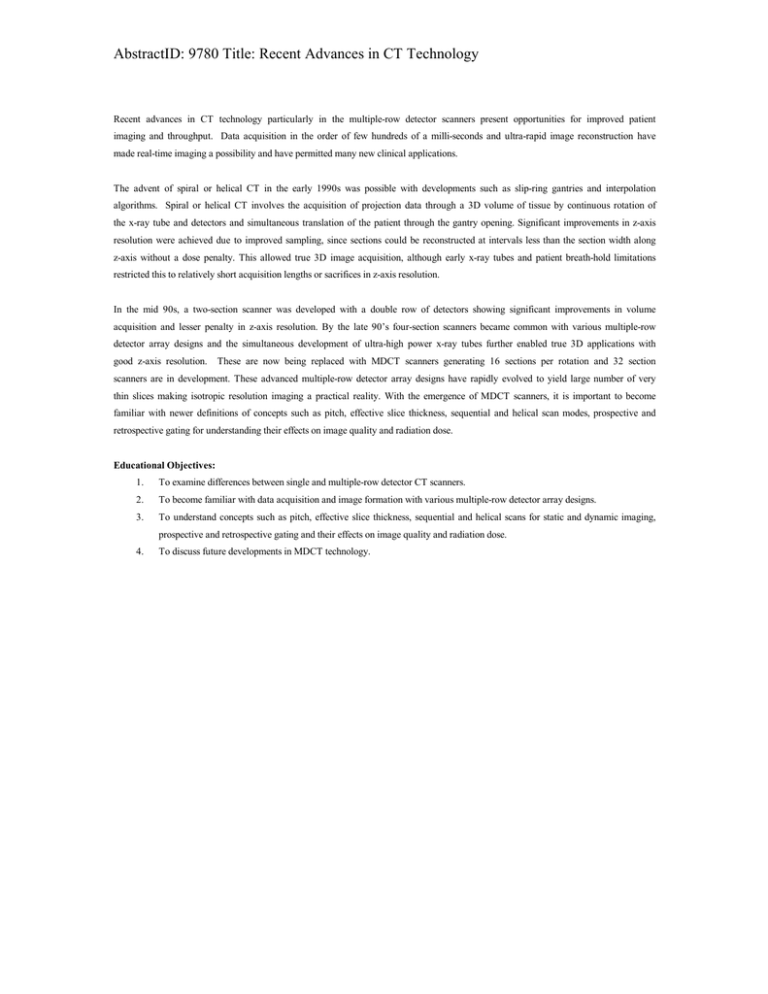
AbstractID: 9780 Title: Recent Advances in CT Technology Recent advances in CT technology particularly in the multiple-row detector scanners present opportunities for improved patient imaging and throughput. Data acquisition in the order of few hundreds of a milli-seconds and ultra-rapid image reconstruction have made real-time imaging a possibility and have permitted many new clinical applications. The advent of spiral or helical CT in the early 1990s was possible with developments such as slip-ring gantries and interpolation algorithms. Spiral or helical CT involves the acquisition of projection data through a 3D volume of tissue by continuous rotation of the x-ray tube and detectors and simultaneous translation of the patient through the gantry opening. Significant improvements in z-axis resolution were achieved due to improved sampling, since sections could be reconstructed at intervals less than the section width along z-axis without a dose penalty. This allowed true 3D image acquisition, although early x-ray tubes and patient breath-hold limitations restricted this to relatively short acquisition lengths or sacrifices in z-axis resolution. In the mid 90s, a two-section scanner was developed with a double row of detectors showing significant improvements in volume acquisition and lesser penalty in z-axis resolution. By the late 90’s four-section scanners became common with various multiple-row detector array designs and the simultaneous development of ultra-high power x-ray tubes further enabled true 3D applications with good z-axis resolution. These are now being replaced with MDCT scanners generating 16 sections per rotation and 32 section scanners are in development. These advanced multiple-row detector array designs have rapidly evolved to yield large number of very thin slices making isotropic resolution imaging a practical reality. With the emergence of MDCT scanners, it is important to become familiar with newer definitions of concepts such as pitch, effective slice thickness, sequential and helical scan modes, prospective and retrospective gating for understanding their effects on image quality and radiation dose. Educational Objectives: 1. To examine differences between single and multiple-row detector CT scanners. 2. To become familiar with data acquisition and image formation with various multiple-row detector array designs. 3. To understand concepts such as pitch, effective slice thickness, sequential and helical scans for static and dynamic imaging, prospective and retrospective gating and their effects on image quality and radiation dose. 4. To discuss future developments in MDCT technology.
